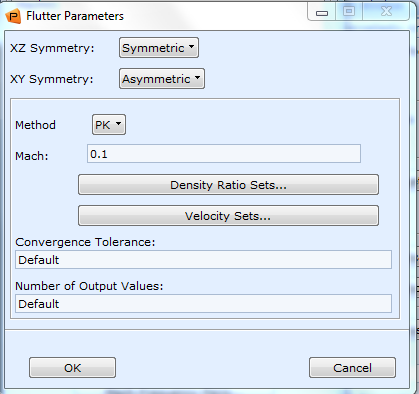BorisGeorgiev93
New member
- Nov 1, 2015
- 20
Dear all,
I have been looking over user guides regarding Flight Loads and Aeroelastics from MSc Software, since I have to make an aeroelastic coupled model of a slender wing (structural beam model + DLM aerodynamic model) and carry out a flutter analysis. I did not manage to find a clear answer, so my hope is that some of you can shed some light on this matter.
When setting the Unsteady Aerodynamics for the model, the user must define Mach Number-Reduced frequency (M-K) pairs. As far as I understand, the range that must be considered for the reduced frequencies is mainly dictated by the Normal Modes of the Structural model (i.e the natural frequencies of vibration for each mode) and also is dictated by the minimum and maximum velocities at which the aircraft/wing is expected to operate at.
My actual question is about the connection between the M-K pairs and the Flutter Parameters that are defined when setting a subcase in FlightLoads? When the actual Analysis tab in Flight Loads is selected and the Flutter SOL 145 is chosen, the user must also create a subcase. A attach a small picture from my FlightLoads graphical user interface for the Flutter Parameters tab.

1) I guess that whatever Mach numbers I selected when defining the M-K pairs, I should type exactly the same number in the 'Mach:' field in the picture above? In other words, I create one subcase for each Mach number in the M-K pairs?
2) If I intend to carry out flutter analysis for different altitudes I define one set of different density rations with respect to sea level (i.e. 1, 0.9, 0.8, 0.7 etc). Then use this set of density ratios for any subcases that I subsequently define.
3) Finally, the 'Velocity sets' tab from the above picture...I create a set of speeds, so that they correspond to the Mach numbers and altitudes selected. Also the lowest and greatest speeds from this set are used in order to determine the minimum and maximum values of the reduced frequencies (K) in the M-K pairs?
I would like to just make sure that I understand things well and that I am doing the correct set up and analysis. I hoped that I made myself clear enough, but if needed can elaborate more on what I mean.
Thank you in advance for the co-operation and attention!
Boris
I have been looking over user guides regarding Flight Loads and Aeroelastics from MSc Software, since I have to make an aeroelastic coupled model of a slender wing (structural beam model + DLM aerodynamic model) and carry out a flutter analysis. I did not manage to find a clear answer, so my hope is that some of you can shed some light on this matter.
When setting the Unsteady Aerodynamics for the model, the user must define Mach Number-Reduced frequency (M-K) pairs. As far as I understand, the range that must be considered for the reduced frequencies is mainly dictated by the Normal Modes of the Structural model (i.e the natural frequencies of vibration for each mode) and also is dictated by the minimum and maximum velocities at which the aircraft/wing is expected to operate at.
My actual question is about the connection between the M-K pairs and the Flutter Parameters that are defined when setting a subcase in FlightLoads? When the actual Analysis tab in Flight Loads is selected and the Flutter SOL 145 is chosen, the user must also create a subcase. A attach a small picture from my FlightLoads graphical user interface for the Flutter Parameters tab.

1) I guess that whatever Mach numbers I selected when defining the M-K pairs, I should type exactly the same number in the 'Mach:' field in the picture above? In other words, I create one subcase for each Mach number in the M-K pairs?
2) If I intend to carry out flutter analysis for different altitudes I define one set of different density rations with respect to sea level (i.e. 1, 0.9, 0.8, 0.7 etc). Then use this set of density ratios for any subcases that I subsequently define.
3) Finally, the 'Velocity sets' tab from the above picture...I create a set of speeds, so that they correspond to the Mach numbers and altitudes selected. Also the lowest and greatest speeds from this set are used in order to determine the minimum and maximum values of the reduced frequencies (K) in the M-K pairs?
I would like to just make sure that I understand things well and that I am doing the correct set up and analysis. I hoped that I made myself clear enough, but if needed can elaborate more on what I mean.
Thank you in advance for the co-operation and attention!
Boris




